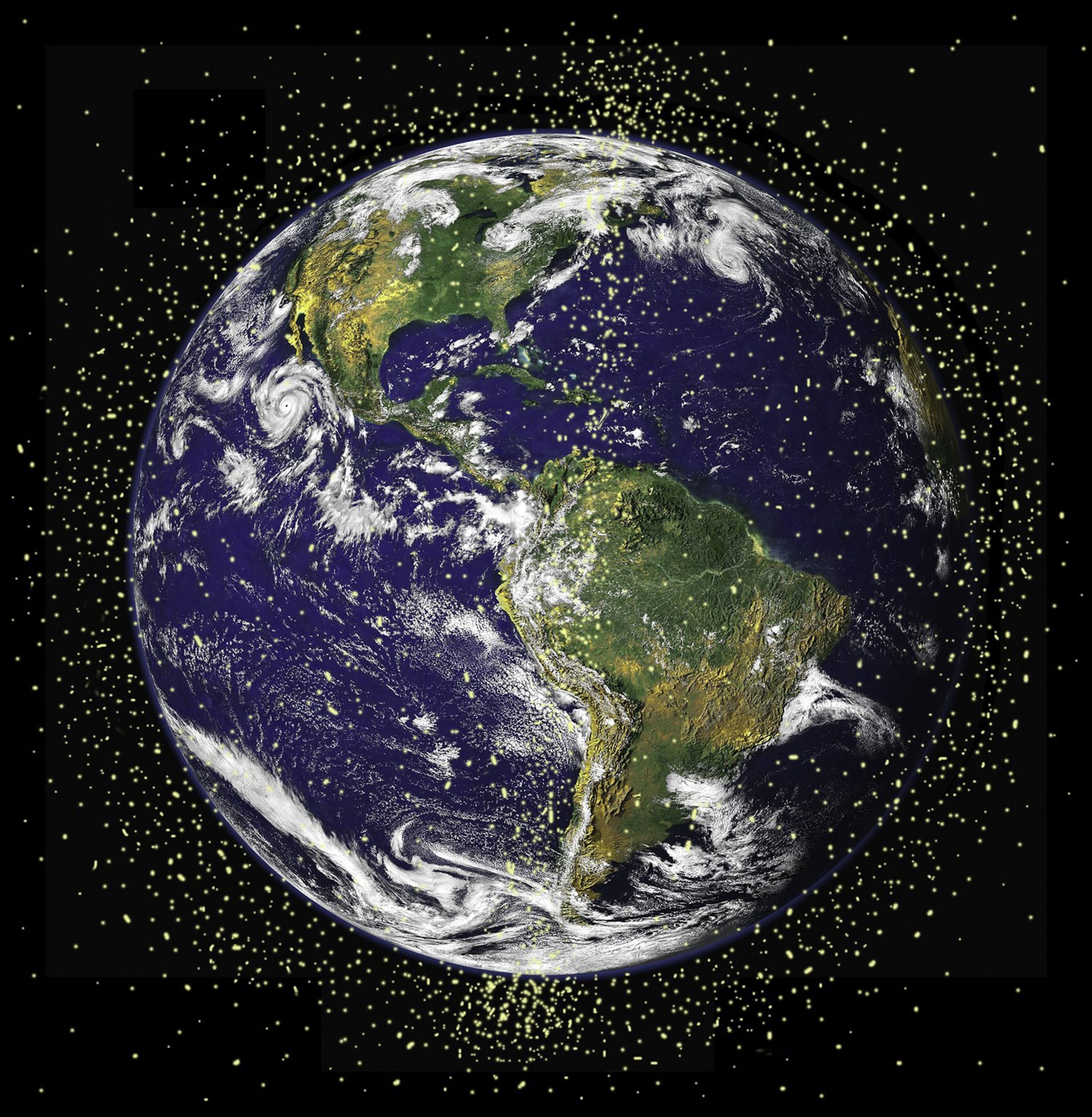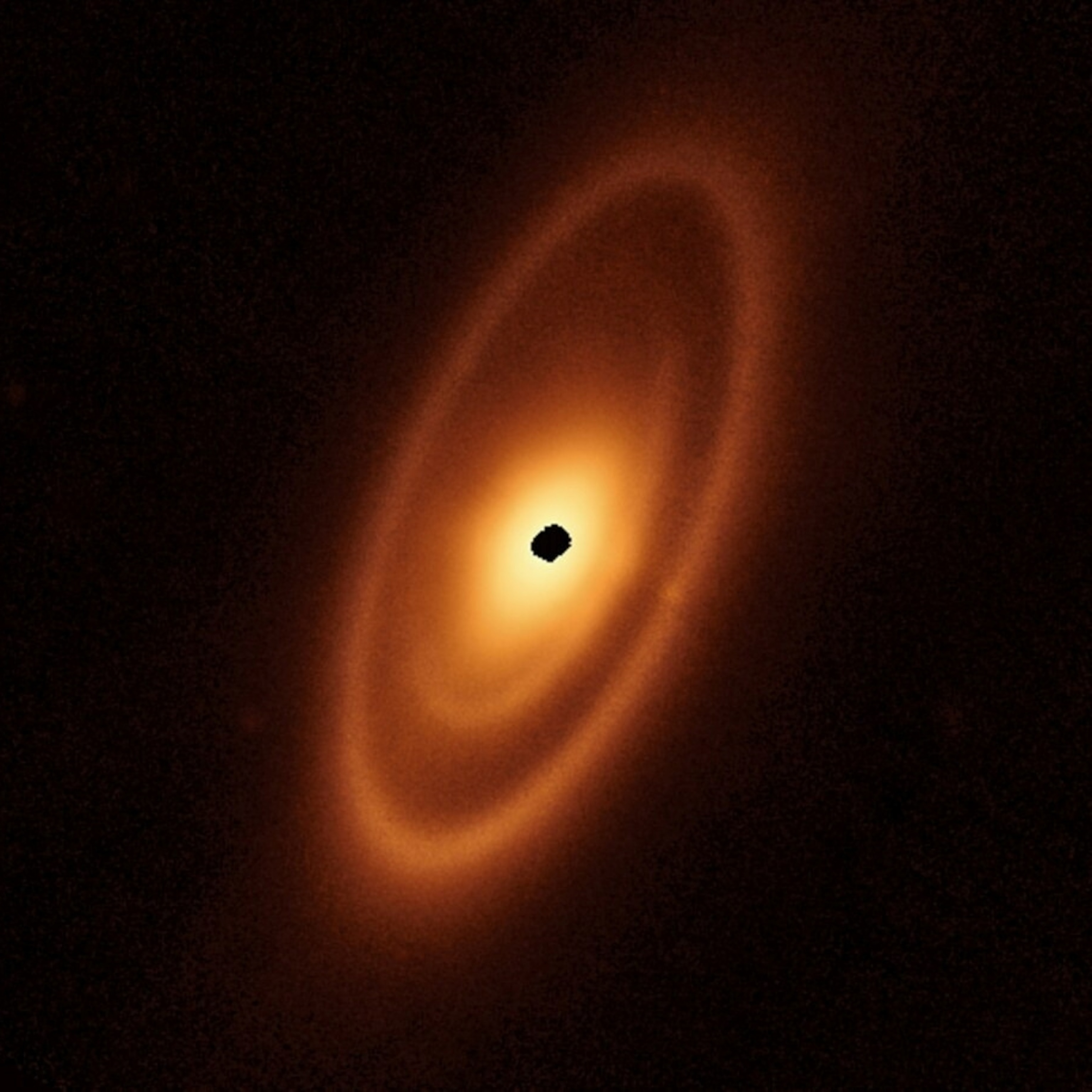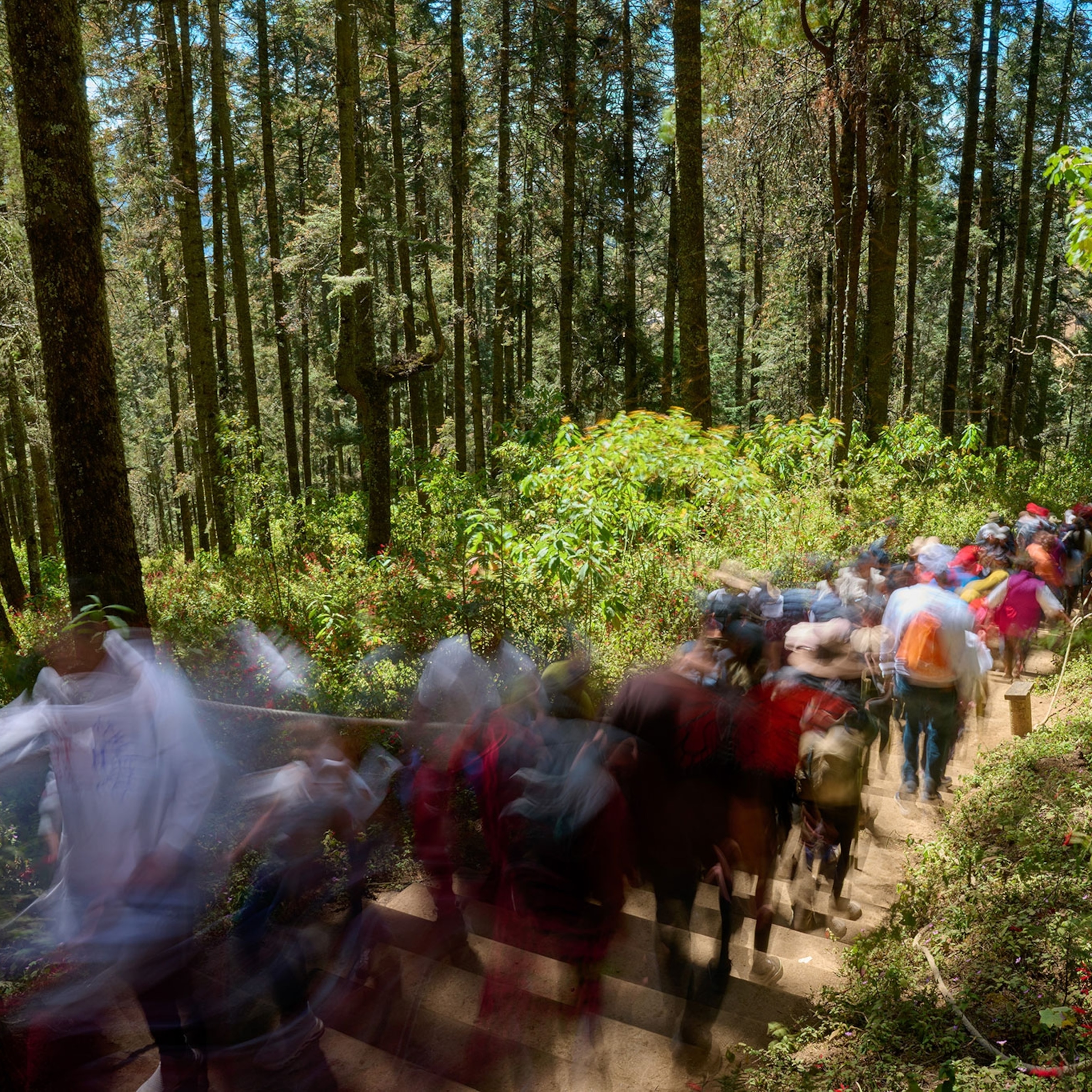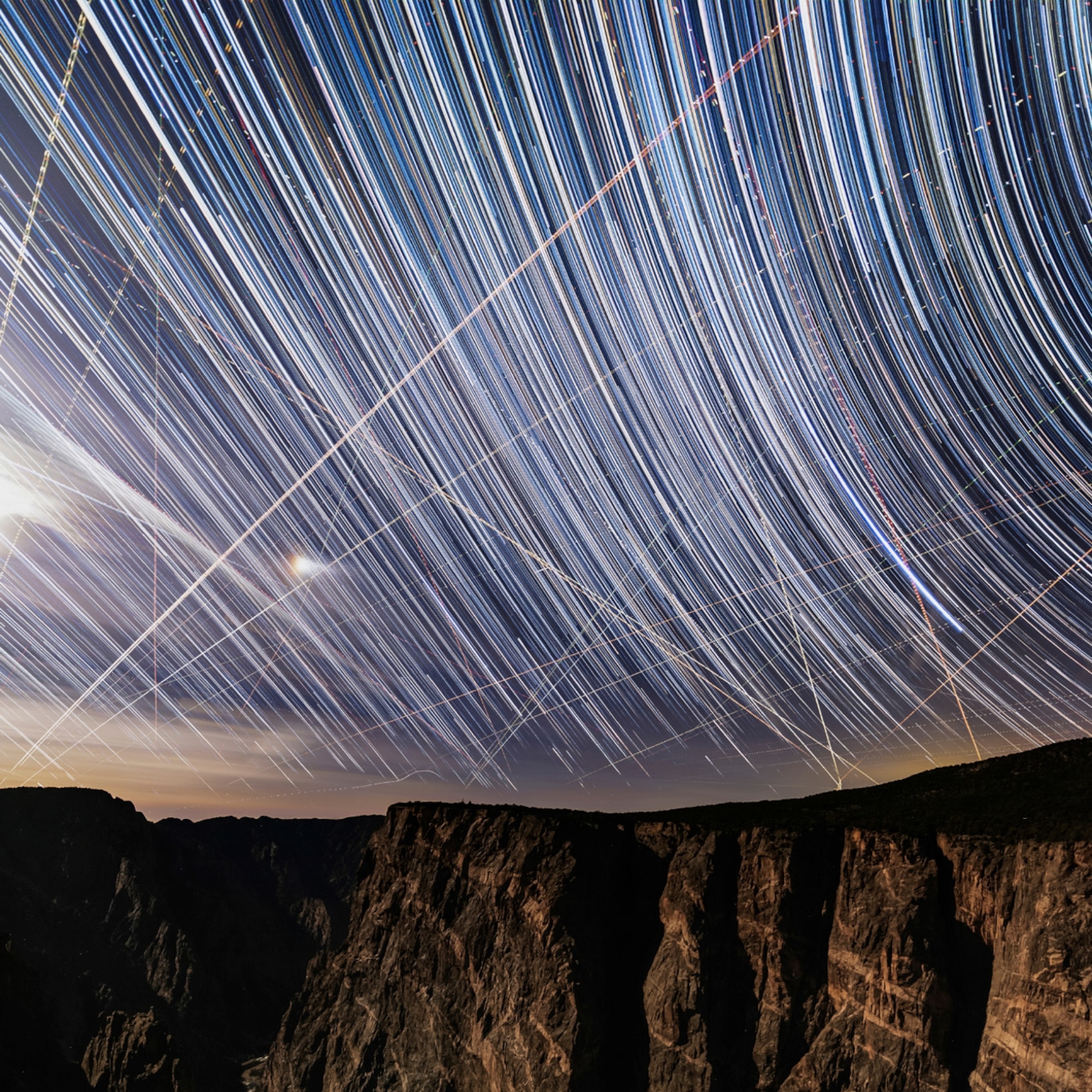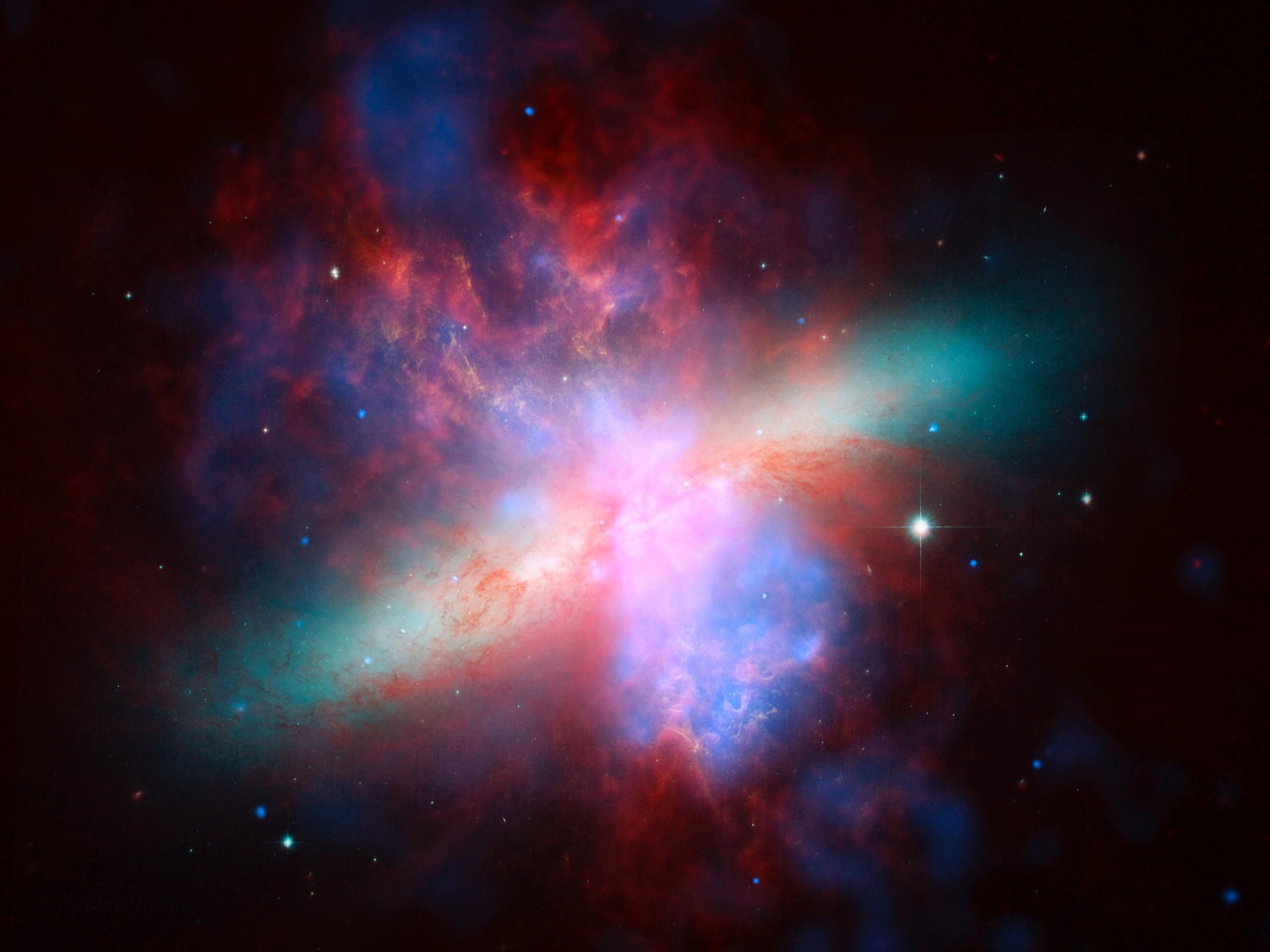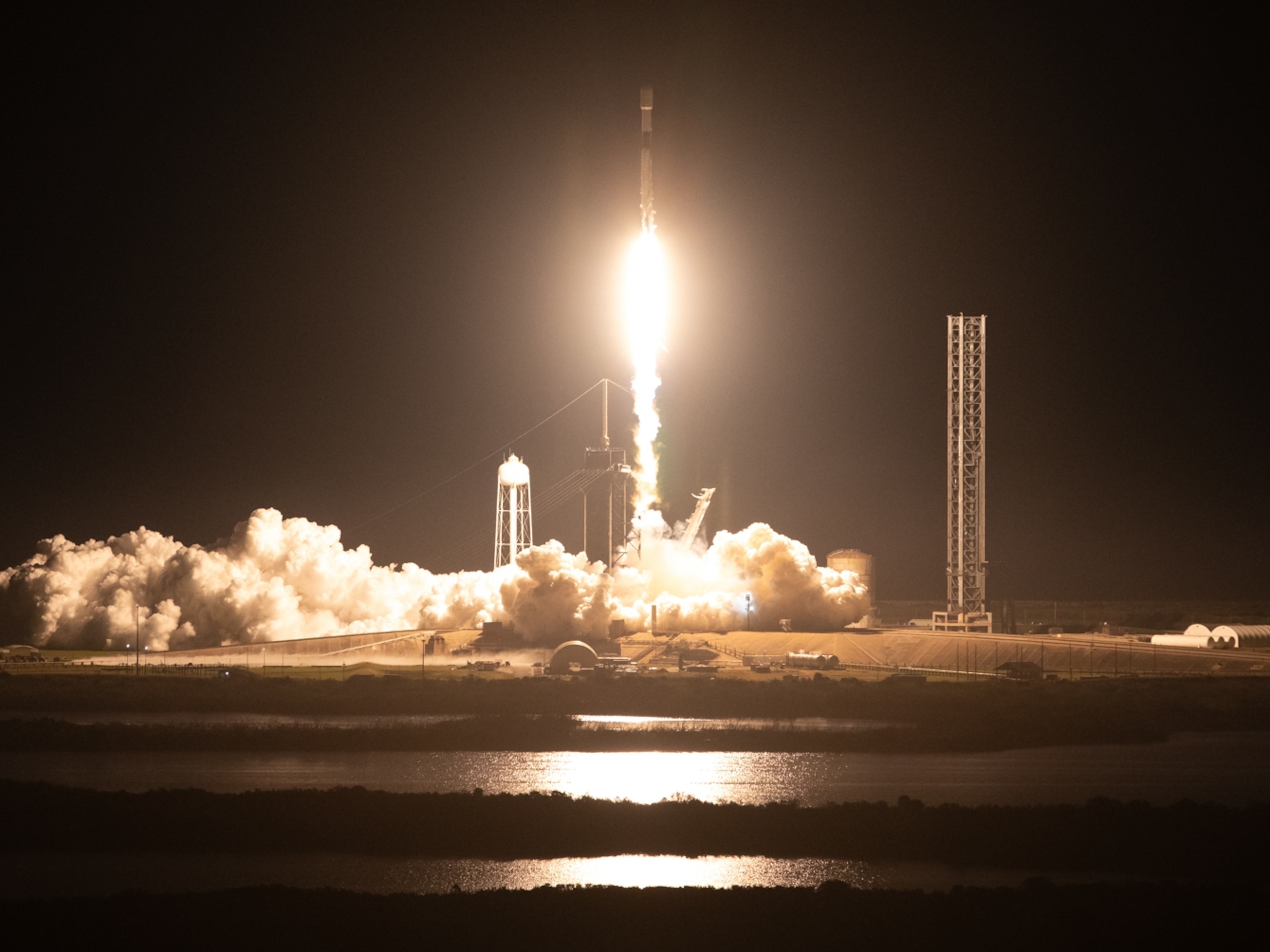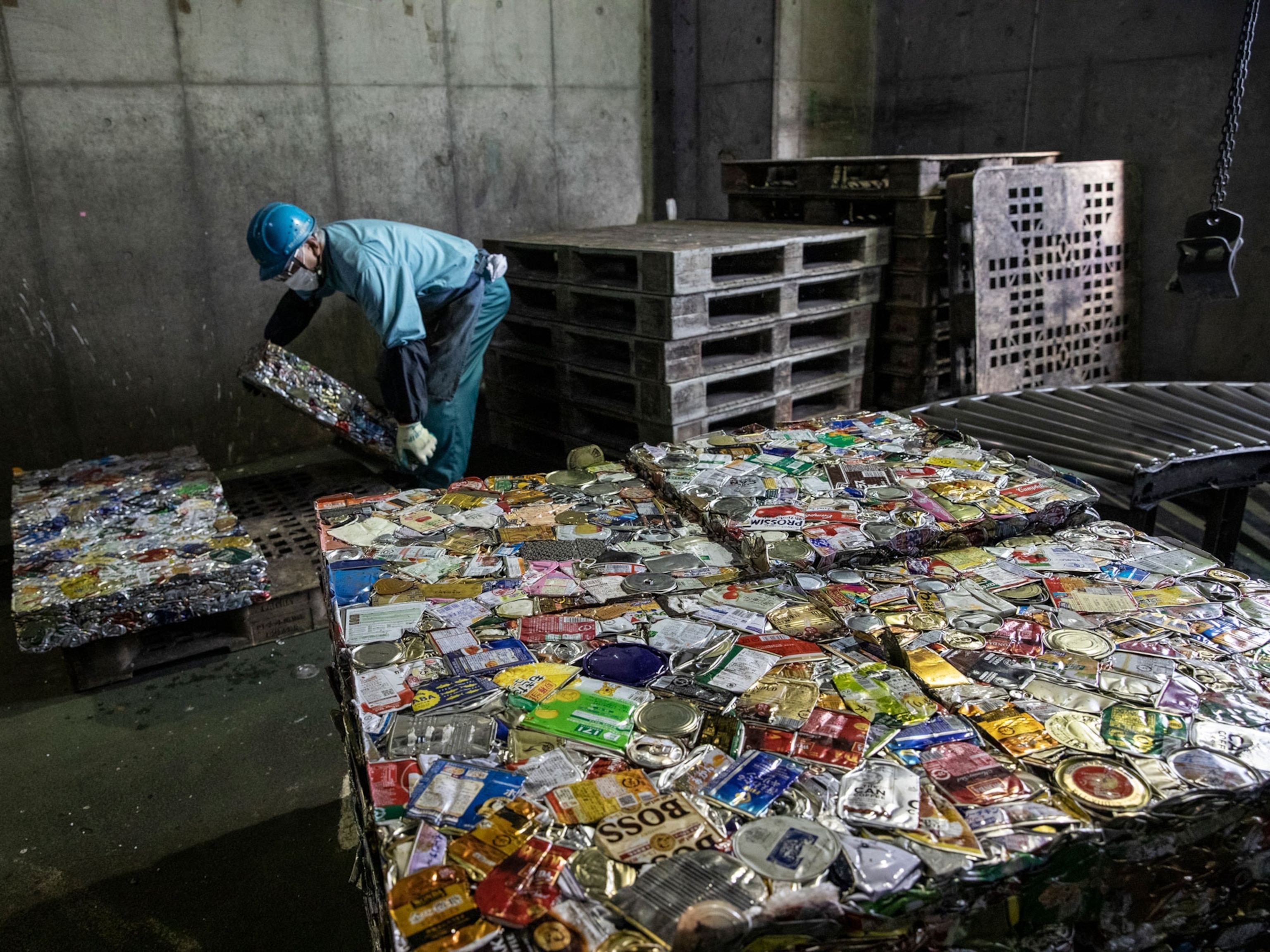Two pieces of space junk, each about the weight of a compact car, had a close encounter on October 15 some 620 miles above Earth. If they had collided—experts put the odds at about 5 or 10 percent before closest approach—the smashup would have created a cloud of debris that would jeopardize other satellites and spacecraft for decades.
The two objects are a defunct Russian navigation satellite launched in 1989 and a spent Chinese rocket part from a 2009 launch. Calculations by LeoLabs, a California-based company that tracks objects in low-Earth orbit, pegged the moment of closest approach at 8:56 p.m. ET on October 15 above the southern Atlantic Ocean, just off the coast of Antarctica. About an hour after the moment of closest approach, LeoLabs confirmed that there was “no indication of collision,” after the two objects passed over the company’s New Zealand tracking station.
The pass was another near-miss—one of a handful that happen every year. These two pieces of space junk are particularly large, however. The third stage of the rocket—the upper part that separates from lower stages and flies all the way into orbit—measures about 25 feet long. The satellite measures 16 feet long, with a boom used to stabilize the spacecraft extending almost 56 feet. The combined mass of the two objects is about 6,000 pounds, and their relative speed was about 33,000 miles an hour, according to LeoLabs.
If they had smashed head-on, it would have created two big clouds that “spread out into a shell of debris around the Earth,” says LeoLabs CEO Daniel Ceperley. And because of the objects’ altitude, the debris would have been “up there for centuries” before burning up in the atmosphere.
Even if the objects had collided, there would have been “no threat to the Earth,” McDowell says. The impact would have released “small debris pieces that will completely burn up in the atmosphere.”
The International Space Station (ISS) was also in no immediate danger. The ISS orbits at an altitude of about 250 miles, “safely below” the altitude where the debris would have been unleashed. There would “probably not be a big risk to the ISS in the near term” if the objects had collided, McDowell says. But over many years, bits of debris from such a collision could drift down to the space station’s orbit. “It would increase the amount of ‘rain’ failing on it,” he says.
The ISS has had to maneuver out of the way of space debris to avoid damage on three occasions this year, including a near miss less than a month ago.
The debris field from a collision of this scale would have posed a danger to any craft passing through, including satellites on their way up to a higher geosynchronous orbit (about 22,000 miles above Earth), or any satellites above that are being deorbited into the atmosphere to burn up.
Litter in space
The space around Earth is getting more and more crowded. In all, some 29,000 human-made objects larger than 3.9 inches are believed to be circling Earth, which means the danger of space collisions is greater than ever. Demand for more and better internet access is steadily increasing the population of satellites. For example, private firm SpaceX has launched several hundred of its Starlink communication satellites into low-Earth orbit, and thousands more are planned.
One of the worst space equipment collisions happened in February 2009, when the operational Iridium 33 communications satellite collided with a defunct Russian military satellite, Kosmos 2251, above Siberia. The crash unleashed some 1,800 pieces of space debris that are still being tracked, and it increased the total amount of debris in low-Earth orbit by about 10 percent, McDowell says.
“We have no space traffic rules to mitigate these concerns over safety,” says Moriba Jah, an orbital mechanics researcher at the University of Texas, Austin, who developed ASTRIAGraph, a crowdsourced space traffic monitoring system. Unless we develop a better system for avoiding collisions, cascading space junk could limit access to orbit. “We’re on that path, unless we do something different.”
To date, most of the data about the trajectories of these objects has come from the U.S. military. The Space Surveillance Network, part of the U.S. Space Force, uses a global array of telescopes to track everything larger than a grapefruit. However, with the growing use of low-Earth orbit for commercial purposes, the Office of Space Commerce, part of the Department of Commerce, is preparing to play a larger role in tracking what’s above our heads, as are private companies such as LeoLabs.
Ceperley points out that most of the U.S.’s military radar installations were built during the Cold War “to look for missiles coming over the north pole.” Before LeoLabs opened its tracking station in New Zealand, he says, there was little surveillance of the Southern Hemisphere’s skies. (The company also operates stations in Alaska and Texas.)
NASA, for its part, established an Orbital Debris Program in 1979—but it only tracks the agency’s own spacecraft, not the many thousands of other objects orbiting our planet. The Department of Defense provides advance warning to NASA, as well as to companies and countries around the world, if it detects that spacecraft are in danger of being hit.
As more satellites are launched to space, more close calls and, ultimately, more collisions, are inevitable, Ceperley says. “These things are happening, and they’re happening more frequently—and we need to figure out how to deal with them.”
